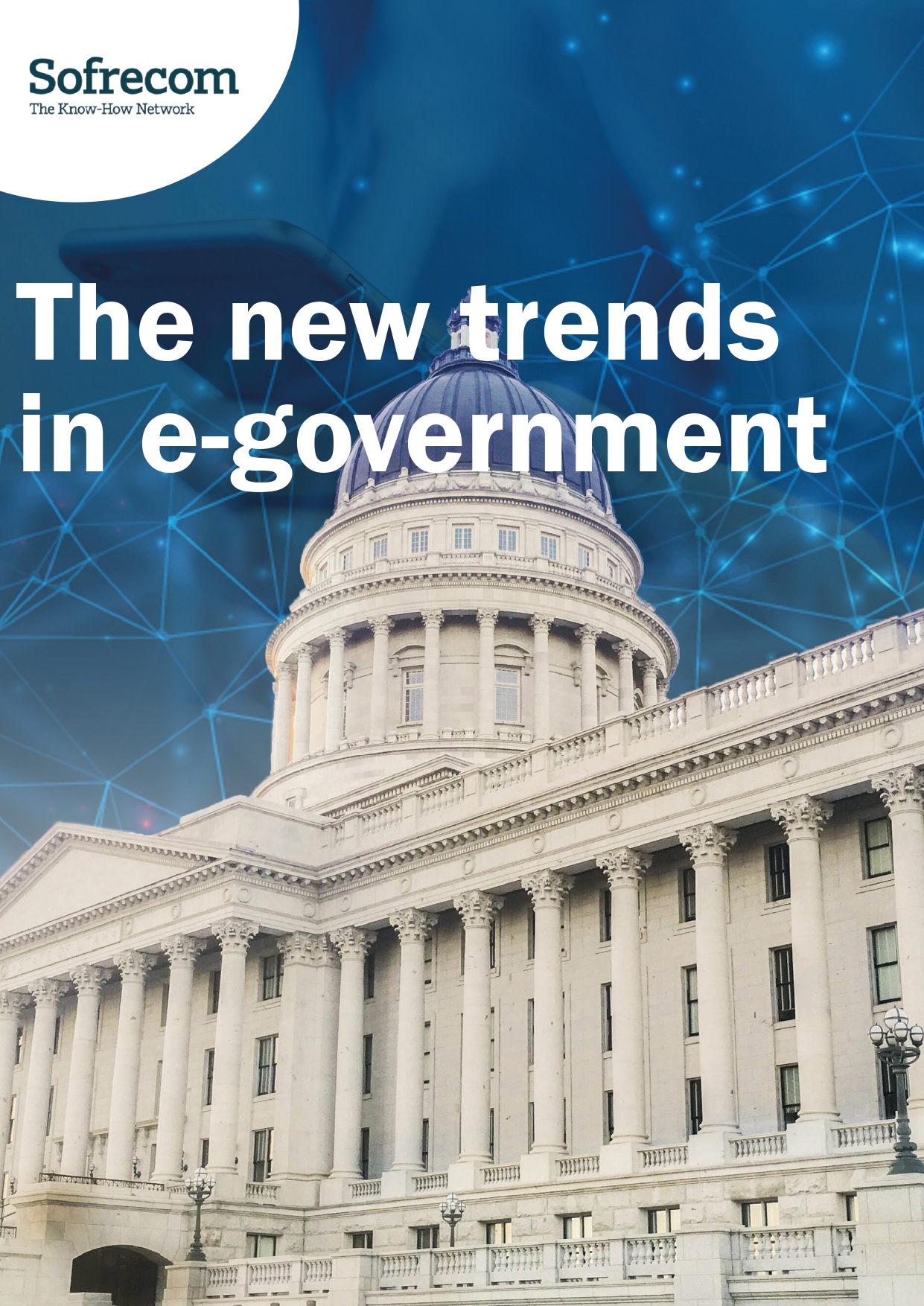
The digital maturity of governments in the UN’s 193 member countries continues to progress, driven by the digitization of their public services. In 2018, 40 countries in Europe, Asia, Oceania and the Americas reached a very high level of e-government maturity according to the index, as compared to 29 in 2016. While the digital divide persists in Africa, several countries on the continent have made noteworthy advances in the provision of mobile and on-line services. However, in this technological race to digitize their processes, it is important that governments not forget the main issue at stake with dematerialization: simplifying the citizens’ user journey.
Significant progress in governments’ digital maturity…
In the last two years, the e-government maturity of the 193 UN member countries has improved by more than 0.5 points. The eGovernment Development Index (EGDI) established by the United Nations E-Government Survey 2018, a study conducted every two years since 2001 (see box), reached a global average of 0.5491 in 2018, as compared to 0.4922 in 2016. The increase was particularly significant in Africa, where the EGDI came out at 0.3423 in 2018 versus 0.2882 in 2016, and where Mauritius, the continent’s leader, ranked 66th worldwide, with an EGDI of 0.6678. In Europe, still the leader in terms of e-government development worldwide, France climbed from 10th place in 2016 to 9th in 2018, with an EDGI index of 0.8790. Its aim is to have fully dematerialized its public services by 2022.
… driven by the digitization of public services
For the first time in 2018, the development of online public services was the main factor driving improvement in countries’ EGDI scores, as revealed by the OSI (Online Service Index) indicator, which reached a global average of 0.5691 in 2018 versus 0.4623 in 2016 (+0.1068).
This is a sign of significant progress in the use of ICTs for the provision of public services across the world, particularly in Africa and Oceania, two regions that particularly improved their OSI in 2018. In 2018, Africa achieved an OSI of 0.3633 vs 0.2567 in 2016, and Oceania an OSI of 0.3929 vs 0.2966 in 2016. In Africa, 57% of the countries, or 31 out of 54, improved their OSI score in 2018.
These results suggest that the EGDI score of continents still under-equipped in infrastructure and lacking human resources educated and trained in ICTs, is doubly hurt by the methodology of the UN study, which is based on the average of three indicators - infrastructure, human resources and online services - each weighing 1/3 in the final result when they do not have the same repercussions. Infrastructures (TII) and human capital (HCI) are only prerequisites, essential bases for the development of digitization in public services, while the development of online services (OSI) fully serves the objective of e-government: improving the quality and efficiency of public services to facilitate the lives of citizens and businesses. In my view, in assessing and comparing the progress of states, it would thus be fairer to take into account only one criterion: the development of online services (OSI).
Out of the 55 countries on the African continent, only 4 have an overall EGDI equal to or above the global average, while 10 countries post OSI above the global average.
Three e-services commonly used worldwide
The UN’s 193 Member states all have a national portal, though maturity levels differ, and a back-end system that automates basic administrative tasks. 140 countries provide at least one online transactional service.
Out of the offers made available to them, citizens tend to use three services in particular. These are: the payment of public services, in particular the supply of electricity and water, in 140 countries; income tax declaration, in 139 countries; and registration for new companies, in 126 countries.
Progression in mobile services
Another 2018 trend stemming from the continued development of network coverage, the growth of data traffic and smartphone penetration was the ability of many governments to offer mobile services or applications. 46% of the 193 UN Member states provide such services in the area of education, 38% in the area of employment, 36% in health and environment and 33% for social protection.
In Africa, where mobile penetration is high compared to other network technologies, governments have to prioritize their mobile services, by adopting a “Mobile First” approach to develop information and transactional services for citizens and businesses.
Government Open Data portals developing
In addition, 139 countries, i.e. 72% of the United Nations Member states, have an Open Data Government (ODG) portal, compared with 46 countries in 2014 and 106 in 2016. This significant increase in the opening up of public data, accessible to all civil society players and reusable, contributes to increased transparency and trust in governments and public institutions.
National portals aiming also for improved referencing
However, it is not enough to have a national portal; governments still need to give their portals visibility if they want to attract users. A recent study conducted in the United Kingdom shows that citizens seeking information about an administrative procedure (moving house, renewing their identity card, etc.) prefer to use a search engine such as Google, Yahoo, Bing, etc. to find the information, rather than the government’s national portal. This tendency should stir governments to think about their referencing policy with a view to giving their site greater visibility and improving the referencing of information published.
Consequently, governments will need to develop new skills around digital marketing to promote their digital services and improve the Citizen experience.
Quality information fosters effective transformation
Today, many countries are embarking on what are sometimes complex projects to dematerialize the processes of the state and public institutions. Yet racing to digitize alone is not enough to succeed in an e-government approach; on-the-ground experience shows us this every day!
The critical issue in developing interactions with users and offering them a smoother citizen journey is firstly to provide them with practical, clear, reliable and up-to-date information. Information in step with the needs of individuals and companies: being familiar with the procedures to be carried out, opening hours, email contacts, addresses; downloading the forms to be completed; being informed by SMS of the progress of the procedure, etc.
However, a considerable backlog in this area can be seen in many countries, including Europe. For instance, in France, one of the leading countries in the development of e-services according to the results of the 2017 Digital Public Services Dashboard Survey, only 28% of individuals completed an administrative process online in 2016, while 47% viewed one of their accounts online and 42% sought information on administrative procedures,
These percentages reveal that users of public services are in search, first and foremost, of information, similar to consumers in the e-commerce sector, where 8 out of 10 buyers look for information on the Internet before going to the store to make their actual purchase.
It should be noted that the provision of information is a purely organizational aspect of the digital transformation and does not raise any particular technical difficulties.
Measurable ROI
For governments, e-government procedures are one means of optimizing costs. A study on the “effectiveness and efficiency of e-government” carried out by the English government shows that the face-to-face relationship with the user costs 50 times more than a 100% digital transaction, while a telephone and postal relationship costs 20 and 30 times more than a fully dematerialized transaction, respectively.
This explains why the most mature countries in the field of e-government are increasingly opting for «digital first», in other words for a 100% dematerialized channel, without a physical counter, to carry out certain administrative procedures. By promoting the development of government electronic transactions, this approach fosters digital inclusion. It has one drawback, however: it can widen the digital divide between connected citizens and those who do not have access to the Internet and online services.
The UN E-Government Study
In June 2018, the United Nations Department of Economic and Social Affairs (UNDESA) published its 10th comparative study on the e-government maturity of the UN’s 193 Member states: United Nations E-Government 2018 Survey. Maturity is assessed based on the EGDI (E-Government Development Index), which is itself the average of three indicators:
- The “Telecommunication Infrastructure Index” (TII), which reflects the penetration of the fixed and mobile telecommunications infrastructures enabling Internet access.
- The “Human Capital Index” (HCI), which looks into adult literacy and school enrollment rates.
- The Online Service Index (OSI) which scores the quantity and quality of the on-line services provided by governments.






